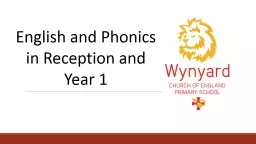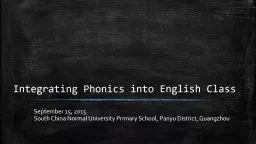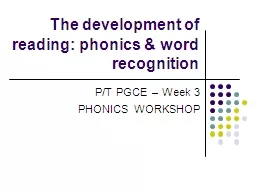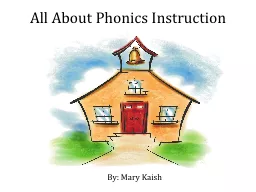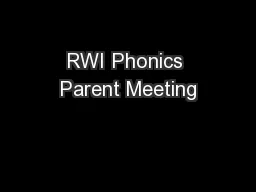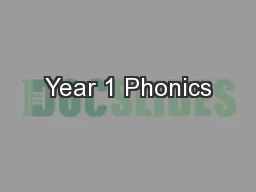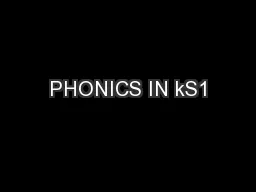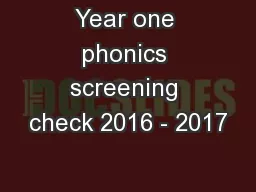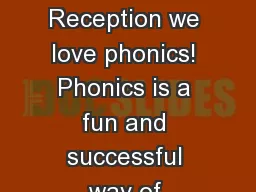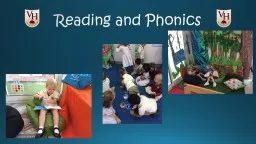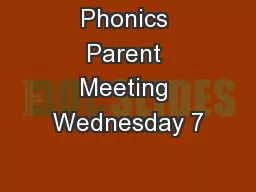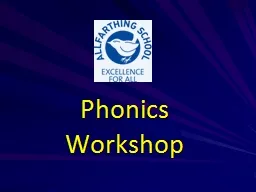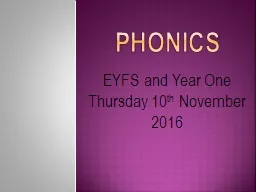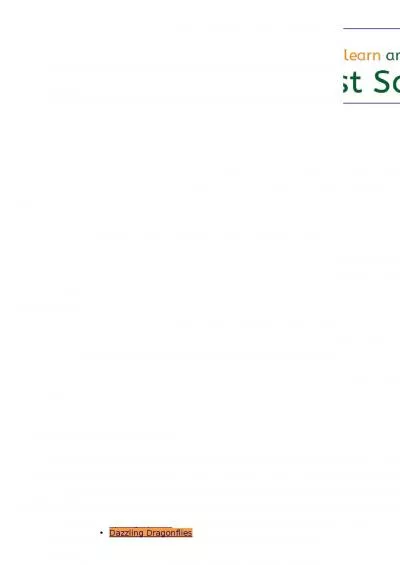PPT-English and Phonics in Reception and Year 1
Author : liane-varnes | Published Date : 2017-07-31
Read Write Inc Phonics is an integral part of the curriculum in Reception and Year 1 In school we follow the Read Write Inc phonics programme Read Write Inc Phonics
Presentation Embed Code
Download Presentation
Download Presentation The PPT/PDF document "English and Phonics in Reception and Yea..." is the property of its rightful owner. Permission is granted to download and print the materials on this website for personal, non-commercial use only, and to display it on your personal computer provided you do not modify the materials and that you retain all copyright notices contained in the materials. By downloading content from our website, you accept the terms of this agreement.
English and Phonics in Reception and Year 1: Transcript
Download Rules Of Document
"English and Phonics in Reception and Year 1"The content belongs to its owner. You may download and print it for personal use, without modification, and keep all copyright notices. By downloading, you agree to these terms.
Related Documents

